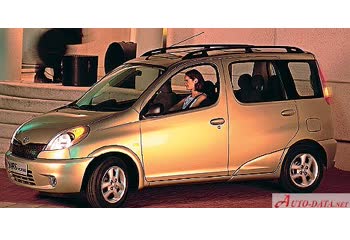Everything you need to know about specifications and performance - Toyota Funcargo Funcargo 1997 - 1.5 i 16V (106 Hp)

Overview:
What is the engine capacity of a Toyota Funcargo 1997?
The engine capacity of the Toyota Funcargo 1997 is 1497.
Toyota Funcargo 1997 How many horsepower?
The engine power of the Toyota Funcargo 1997 is 106 Hp @ 6000 rpm..
What is the Toyota Funcargo 1997 engine?
Toyota Funcargo 1997 engine is 1NZ-FE. (Click to see other cars using the same engine)
How much gasoline does a Toyota Funcargo 1997 consume?
The Toyota Funcargo 1997 consumes 6.7 liters of gasoline per 100 km
What is the recommended oil for a Toyota Funcargo 1997 engine?
The recommended oil for a Toyota Funcargo 1997 car engine is 5W-30 (Toyota manual: 5W-30; summer option 10W-30).
What type of camshaft transmission system is used in a Toyota Funcargo 1997 engine?
Timing chain is used to transmit motion.
General:
Engine:
Performance:
Space:
dimensions:
Powertrain, Suspension and Brakes:
See also

Same engine. (1NZ-FE).
Its production began in 2001 until 2003

Same engine. (1NZ-FE).
Its production began in 1999 until 2006

Same production year and almost the same engine capacity.
Its production began in 1997 until 2005

Same production year and almost the same engine capacity.
Its production began in 1997 until 2004
Write a comment